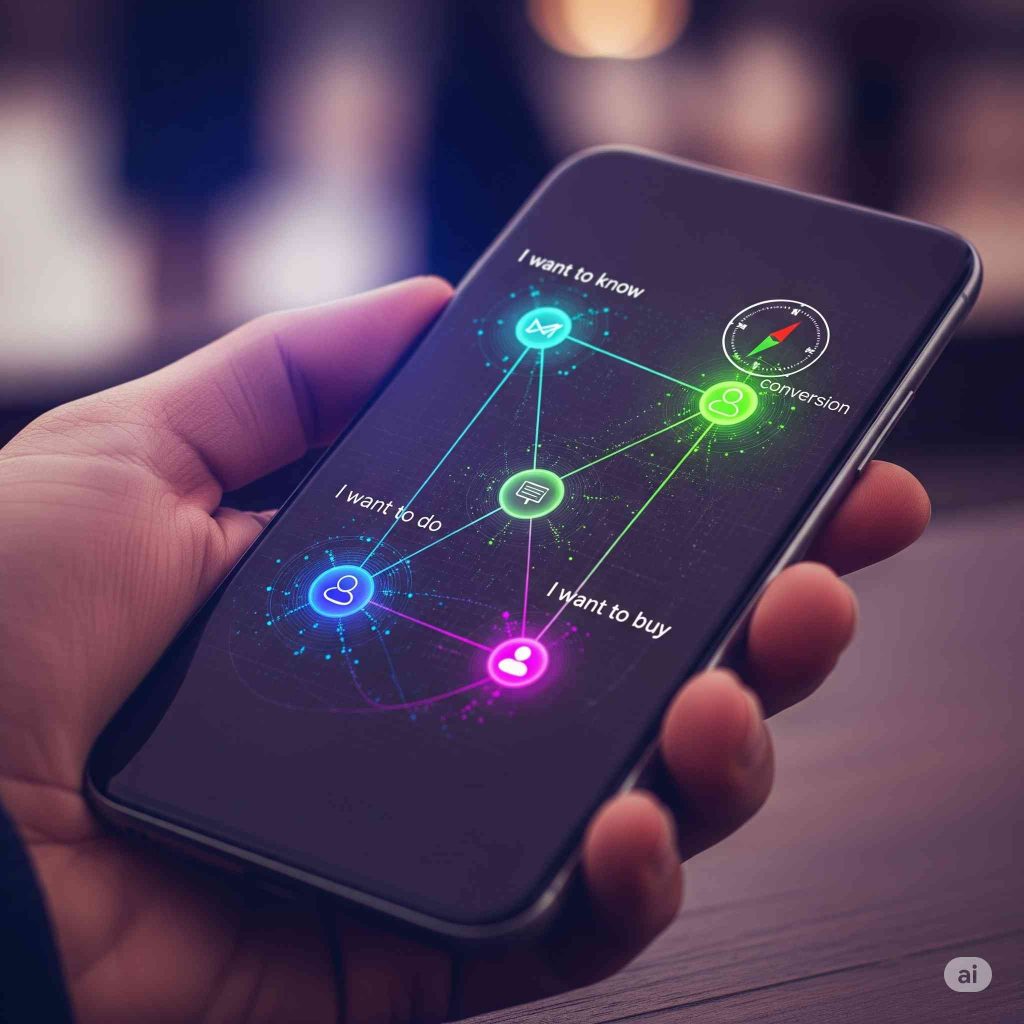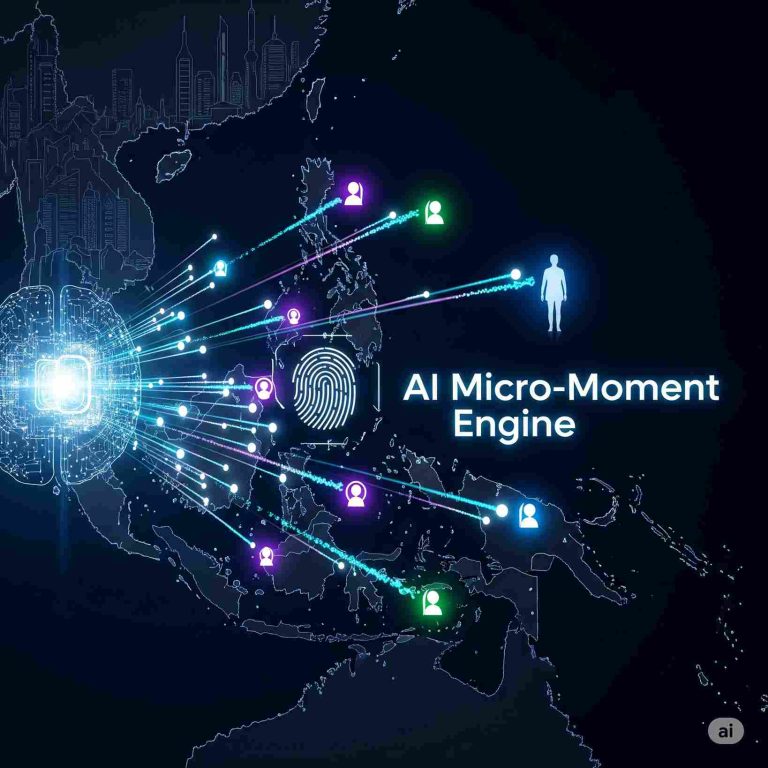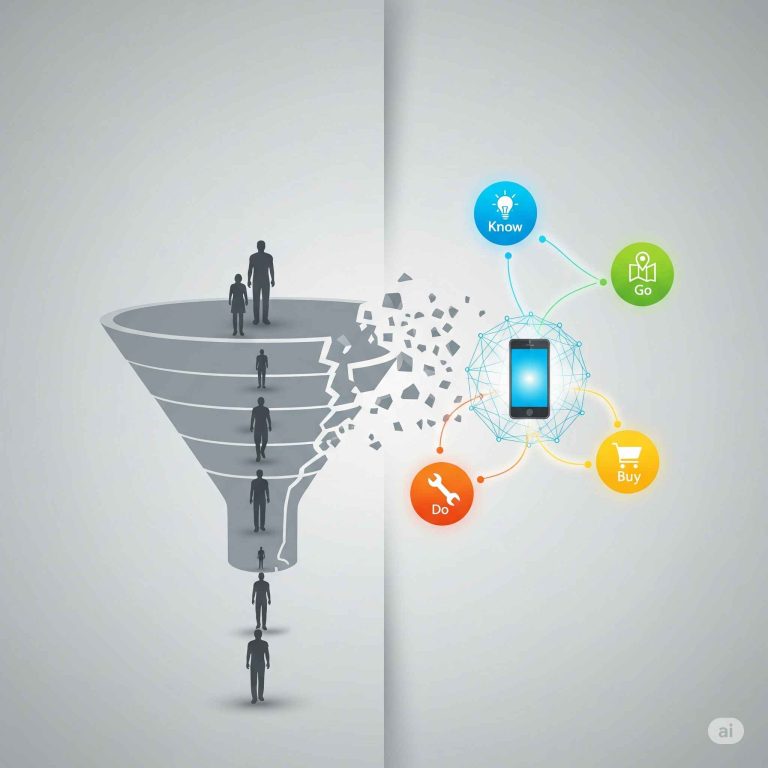Consumer behavior has fundamentally shifted.
The days of linear customer journeys are gone, replaced by “micro-moments”. Those are fleeting, intent-driven instances when we instinctively reach for our devices to find, do, or buy something. These split-second decisions, happening everywhere from the subway to the grocery store, are the new battleground for brands.
For marketers, these moments represent a profound opportunity. However, far too many brands invest in micro-moment strategies without a clear plan to measure their effectiveness. They create content, optimize for mobile, and then cross their fingers, hoping for the best.
Without measurement, micro-moment marketing is just guesswork.
By moving beyond simple traffic numbers and focusing on metrics that truly reflect customer intent, you can transform these brief interactions into a powerful engine for business growth.
The Challenges of Measuring Micro-Moments
The very nature of micro-moments makes them difficult to measure. They are characterized by short attention spans and fragmented, multi-device journeys. A user’s concentration in a micro-moment is incredibly fragile and easily interrupted.
This rapid-fire, non-linear behavior presents three key challenges for marketers:
Fragmented Journeys and Attribution
The modern customer journey is a complex web of interactions across multiple screens and channels. A user might research a product on their smartphone during an I-want-to-know moment and later complete the purchase on a desktop.
It’s crucial to measure performance across all devices and channels to get a holistic view of your strategy’s effectiveness, and to connect digital efforts to offline actions like in-store visits.
The Problem with Silos
To accurately measure this journey, companies must break down the traditional silos between marketing teams and channels. Measuring marketing efficiency for a specific channel in isolation, for example only looking at ad clicks without connecting them to post-click behavior, provides an incomplete and misleading picture.
Micro-Conversions vs. Final Conversions
Not every micro-moment leads to a direct sale. A user might be in an I-want-to-do moment, watching a how-to video. Their “conversion” isn’t a purchase; it’s the successful completion of the task.
Understanding this distinction is key to tracking progress across the entire customer journey, not just at the final purchase stage.
Core Metrics for Each Micro-Moment
To effectively measure your micro-moment strategy, you must align your metrics with the specific intent behind each of the four micro-moment types.
I-Want-to-Know: The Curiosity-Driven Moment
These moments are all about research and exploration, where the user is seeking information but is not yet ready to commit. The goal here is to establish your brand as a trusted authority.
- Click-Through Rate (CTR) from Search: A high CTR indicates that your content’s title and description are compelling and relevant to the user’s query.
- Time on Page & Scroll Depth: While a high bounce rate can signal a lack of relevance, a low time on page combined with high scroll depth might simply mean a user found a quick answer and moved on. Analyzing these metrics together provides a more nuanced view of engagement.
- Knowledge Panel & Featured Snippet Impressions: Earning a featured snippet or a spot in a knowledge panel is the ultimate win for an I-want-to-know moment, as it shows you are providing the most direct and useful answer to a query.
I-Want-to-Go: The Local Intent Moment
These moments are triggered when a consumer is looking for a nearby business or a physical location. The goal is to drive foot traffic.
- Local Search Impressions & “Near Me” CTR: These metrics show how often your business appears in local searches and how effectively you’re capturing clicks from location-based queries.
- Map Clicks & Directions Requests: This is a powerful signal of high intent. Clicks on a “Directions” link or “Call” button on your Google Business Profile show that a user is actively planning a visit.
- Store Visit Data: Many ad platforms and analytics tools can track the number of users who saw a local ad and then visited a physical store.
I-Want-to-Do: The Action-Oriented Moment
These moments occur when a user is seeking instructions or guidance to accomplish a task. The goal is to empower the user and provide value.
- Video Engagement Rate & Watch Time: If you’re using how-to videos, these metrics are essential. A high engagement rate and watch time indicate that your content is useful and holding the user’s attention.
- Downloads & Tutorial Sign-ups: These are direct micro-conversions. Tracking the number of users who download a guide or sign up for a tutorial shows that your content is helping them move forward.
- Task Completion Rates: Using event tracking in your analytics, you can measure how many users complete a specific task on your page, such as filling out a checklist, using a tool, or completing a quiz.
I-Want-to-Buy: The Ready-to-Purchase Moment
These are the most high-value moments, where the user is ready to make a purchase but may need help with their final decision. The goal is to facilitate a seamless purchase.
- Conversion Rate: This is the most foundational metric for I-want-to-buy moments. It measures the percentage of visitors who complete a desired action, like a purchase or sign-up.
- Add-to-Cart % & Checkout Completion Rate: These funnel metrics help you pinpoint exactly where users are dropping off in the buying process.
- Return on Ad Spend (ROAS): A key metric for paid advertising, ROAS measures the revenue generated for every dollar spent on ads, directly tying your campaign to a sales outcome.
Micro-Moment KPIs Across the Funnel
While the moment-specific metrics are critical, a truly successful strategy requires a broader view across the entire marketing funnel.
- Awareness: Focus on metrics that measure your visibility. Track impressions and reach to see how many people you’re reaching. Monitor branded vs. non-branded search queries to see if your micro-moment content is building brand awareness.
- Consideration: This is where you measure engagement. Key KPIs include the engagement rate, bounce rate, and content interactions (e.g., clicks on internal links, video playbacks).
- Conversion: This stage is all about action. Measure leads, sales, and assisted conversions to understand how micro-moments contribute to both immediate and long-term revenue. Remember, a user who researches on mobile and buys on desktop is an assisted conversion.
- Loyalty: A successful micro-moment strategy doesn’t end with a sale. Measure repeat visits, customer satisfaction scores (like NPS), and post-purchase reviews to track loyalty and brand advocacy.
Tools & Analytics to Track Micro-Moments
Implementing a robust measurement strategy requires the right tools.
- Google Analytics 4 (GA4): GA4’s event-based tracking is perfectly suited for measuring micro-moments. You can set up custom events to track specific actions, such as clicks on a “Directions” button for I-want-to-go moments or video watch time for I-want-to-do moments.
- Google Search Console: This tool is your key to understanding user intent. It provides valuable insights into the exact keywords and queries people are using to find your site.
- Heatmaps & Session Recordings (Hotjar, Microsoft Clarity): These tools go beyond simple numbers, showing you how users actually behave on your site. They can track subtle behavioral signals like scroll depth and cursor movement, providing a deeper understanding of user intent and engagement.
- Ad Platforms (Google Ads, YouTube Analytics): Use ad platforms to track your campaigns for I-want-to-buy moments. Google Ads location extensions, for example, are crucial for capturing local search traffic and driving in-store visits.
Turning Data Into Action
Measurement is only the first step. The real value lies in turning your data into actionable insights to improve your strategy.
Identify Weak Points
Your data can quickly reveal strategic issues. A high CTR from search but a low conversion rate on a landing page could indicate a disconnect between user expectation and the content you’re providing. Similarly, a high cart abandonment rate might signal that your checkout process is too long or clumsy.
Use A/B Testing
Once you’ve identified a weak point, use A/B testing to experiment with different content variations. You can test different headlines, calls-to-action, or even entire page layouts to see which version is most effective in capturing a specific micro-moment.
Real-Time Optimization with AI/Predictive Analytics
For a more advanced approach, leverage artificial intelligence and machine learning. These systems can process vast amounts of data in real-time, analyzing behavioral signals like scrolling speed and gaze fixation to dynamically personalize content for the user.
Companies like Nike and Starbucks use these advanced analytics to create dynamic content that aligns with user intent at the microsecond level.
Metrics as the Compass for Micro-Moment Success
In the attention economy, every second counts.
Micro-moments are not just fleeting interactions; they are a direct reflection of customer intent. By moving beyond traditional metrics and building a measurement framework tied to these moments, you gain a powerful competitive advantage.
Treat your data as a compass. It will guide you to where you need to be, highlight what your audience truly needs, and show you exactly where to make improvements to capture that crucial, split-second decision.
By combining a deep understanding of customer intent with a relentless focus on actionable metrics, you can ensure your micro-moment strategy is not just guesswork, but a predictable and profitable engine for growth.
Frequently Asked Questions (FAQ)
Q: What are micro-moment KPIs?
Micro-moment Key Performance Indicators (KPIs) are specific, measurable metrics that track how effectively your brand is meeting a user’s intent in a fleeting moment of need. Unlike vanity metrics like simple page views, KPIs for micro-moments are tied directly to user actions and business outcomes.
For an I-want-to-do moment, for example, a key KPI would be the number of video downloads or tutorial sign-ups, as these show that the user successfully completed a task you set out to help them with.
Q: How do micro-moments affect ROI?
Micro-moments have a direct and significant impact on ROI by influencing both revenue and brand loyalty. By being present and providing useful, fast experiences, you can win customers who are not brand-committed.
Optimizing for micro-moments can increase conversion rates and improve brand visibility , as even a 1-second delay can hurt conversions.
By effectively meeting consumer needs in these fleeting moments, you can drive both immediate sales and build the long-term customer relationships that lead to future revenue.
Q: What’s the difference between micro-conversions and conversions?
A conversion, often referred to as a macro-conversion, is the final, ultimate goal of your marketing effort, such as a product sale, a form submission for a new lead, or a new account sign-up.
A micro-conversion, on the other hand, is a small, valuable action a user takes that indicates progress toward that final goal. Examples include watching a how-to video, downloading a guide, or clicking on a store locator link.
While a micro-conversion doesn’t generate immediate revenue, it shows that your content is successfully meeting a specific user intent in a micro-moment and moving them along the customer journey. Tracking both is essential for a comprehensive understanding of your marketing strategy’s performance.
Q: Can small businesses measure micro-moments effectively?
Yes, small businesses can absolutely measure micro-moments effectively by leveraging free or affordable tools and focusing on the core principles of the strategy. Many of the most powerful tools for micro-moment measurement, such as Google Analytics, Google Search Console, and Google Business Profile, are free to use.
A small business can start by focusing on a few key metrics, such as local search impressions for I-want-to-go moments, or video watch time for I-want-to-do moments, and then scale their strategy as they grow.
The core of a successful micro-moment strategy is about being useful and quick, and these principles are just as achievable for a small business as they are for a large enterprise.
Q: What tools are best for tracking micro-moments?
The best tools for tracking micro-moments depend on your specific goals, but a mix of platforms will give you the most complete picture. For understanding user behavior on your site, Google Analytics 4 is a foundational tool due to its event-based tracking capabilities. Google Search Console is essential for gaining insights into the search queries and keywords that lead users to your site.
For local businesses, Google Business Profile provides critical data on local search impressions and map clicks. To track behavioral signals like scrolling depth and cursor movement, tools like heatmaps and session recordings are invaluable. Finally, ad platforms like Google Ads and social media ad tools are important for measuring campaign performance during high-intent I-want-to-buy moments.




